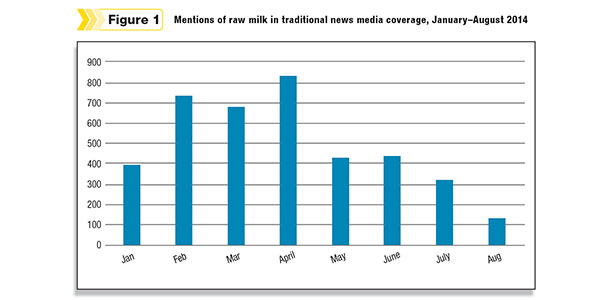The country’s dairy farmers are proud to produce products that can be an important part of the American diet. Sometimes, however, consumers are confused about what role dairy can, or should, play in their diets. Their concerns run the gamut – from lactose intolerance to organic versus non-organic milk to the safety of raw milk.
Adding to the confusion is the barrage of information available to consumers. A quick Internet search of “milk” brings up more than 141 million links to information on the popular beverage including benefits, nutrition, pricing, substitutes and even on the dairy industry in general. What are consumers supposed to believe?
This provides an opportunity for those involved in food production to engage with consumers, address their concerns and help dispel myths surrounding food. How do we do this?
One way is by sharing our values with consumers, which The Center for Food Integrity research has shown is three to five times more important in building trust with consumers than is demonstrating competence. When consumers believe our values align with theirs, they are more receptive to information that will help them separate fact from fiction.
To drink or not to drink?
One topic that consumers have questions about is raw milk. Not only can information on the subject be confusing and contradictory, the topic itself can be quite controversial. The question of whether to drink raw milk has been debated for years, and this year has proven no different.
In fact, the topic of raw milk generated a fair amount of news media coverage every month so far in 2014 and will likely continue to do so throughout the remainder of the year.
The chart below, from The Center for Food Integrity’s SITE proprietary media monitoring system, shows that coverage on the topic was heavier at the beginning of the year due largely to coverage on safety concerns and various state legislation efforts regarding the sale of raw milk, but is still steady even though coverage has waned somewhat over the past few months.

In April 2014, a high-profile article in Forbes magazine discussed the dangers of raw milk, with the author stating that “… fans of raw milk appear to be ‘stunningly unaware of Pasteur’s achievements, and equally ignorant of the dangers of bacterial infections.’”
The article cited data from the Centers for Disease Control and Prevention (CDC), which found in a review of infectious disease outbreaks across the U.S. from 1993-2006 that the “rate of outbreaks caused by unpasteurized milk (often called raw milk) and products made from it was 150 times greater than outbreaks linked to pasteurized milk.”
Also in April, a Washington Post article discussed an alliance of food activists battling to legalize raw, unpasteurized milk. The article stated that illnesses associated with raw milk, including kidney failure and paralysis, have increased along with its popularity.
Advocates of raw milk insist the product is healthy and is “nature’s perfect food,” but data suggests otherwise. The CDC reported that 796 people in 24 states were sickened between 2006 and 2011 after consuming raw milk, and CDC and FDA officials say 55 percent of the victims are younger than 18 years of age.
In January of this year, the American Academy of Pediatrics advised against the consumption of raw milk for infants, children and pregnant women, saying there is no scientific evidence to support health claims of raw milk.
On the other side of the argument, advocates of raw milk say the product is safe to consume, and that children who consume raw milk have greater resistance to disease, better growth and stronger teeth than children who consume pasteurized milk.
Other benefits of raw milk consumption, according to proponents, include a reduced likelihood of developing allergies and asthma and even better behavior among children. The website Realmilk.com provides information on the benefits of consuming raw milk, links to various studies showing its safety and discusses its efforts in legalizing raw milk sales across the country.
The proliferation of misinformation on social media channels only serves to confuse consumers on the issue. As an example, a Twitter user posted to his 22,000 followers: “The irony of ‘milk for calcium?’ Pasteurization destroys the natural calcium in milk, so it’s added in.”
Although some of his followers were quick to point out the assertion was not factual, the message was delivered all the same. For the record, Dr. Lloyd Metzger, professor in dairy education at South Dakota State University, tells us, “Pasteurization does not have any impact on the calcium in milk, and there is no difference in calcium content between raw and pasteurized milk.”
Communicating our values
The ability for consumers to choose which foods to consume – whether organic or vegan, prepackaged or fresh, locally grown or conventionally raised, from the supermarket or from the farmers’ market – is important.
Some food choices made by one family may not be right for another family, and consumers should be able to choose foods that fit their lifestyles and budgets. We all want food that is safe, wholesome and that meets our needs. When data shows that public health is threatened, as is the case with raw milk, where is the line between consumer choice and consumer protection?
The Center for Food Integrity advocates for providing consumers with the information they need to make informed choices that improve public health. The raw milk debate is a contentious one indeed and provides those involved in food production an opportunity to engage in a more informed conversation with consumers.
It’s important to understand both sides of the issue to effectively communicate our shared values and commitment to providing safe, nutritious food.






